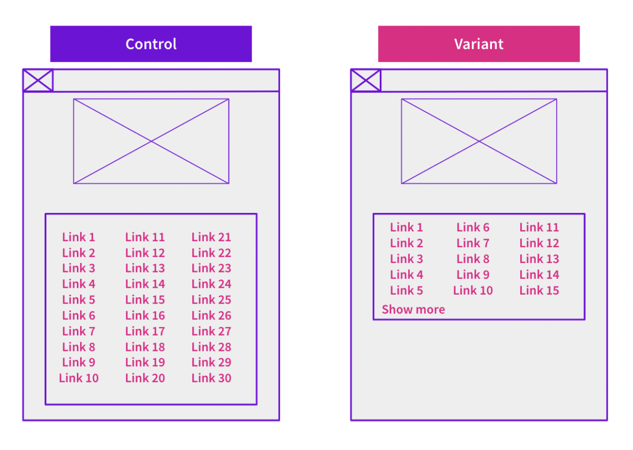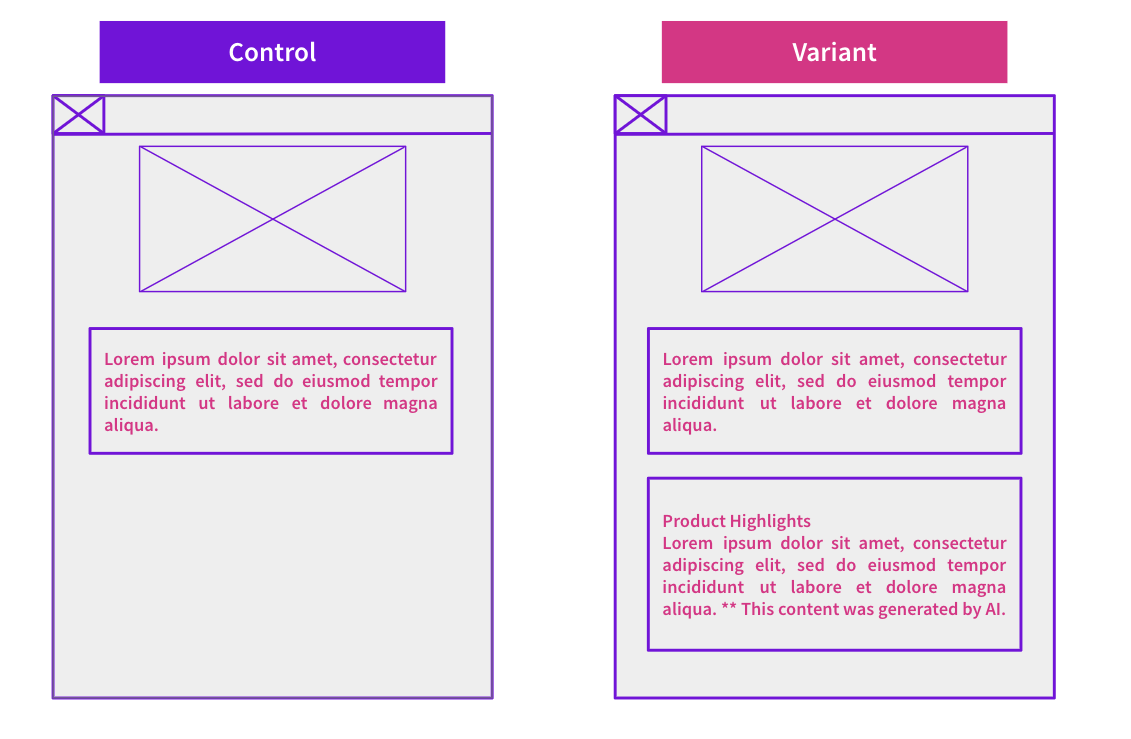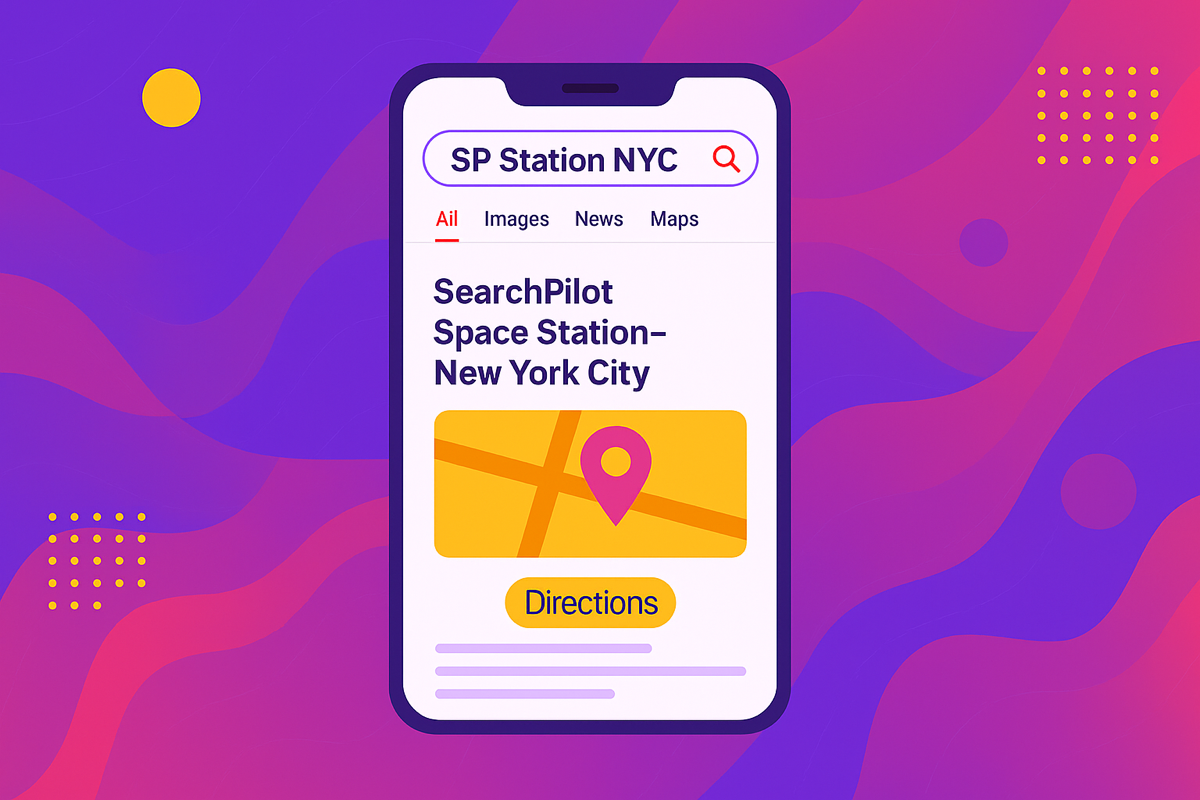Start here: how our SEO split tests work
If you aren't familiar with the fundamentals of how we run controlled SEO experiments that form the basis of all our case studies, then you might find it useful to start by reading the explanation at the end of this article before digesting the details of the case study below. If you'd like to get a new case study by email every two weeks, just enter your email address here.
In this week’s #SPQuiz, we tested reducing the size of a customer’s internal link block and placing some links behind a ‘Show More’ button on desktop page load.
We asked our followers what they thought the impact would be on organic traffic, here is how they voted:
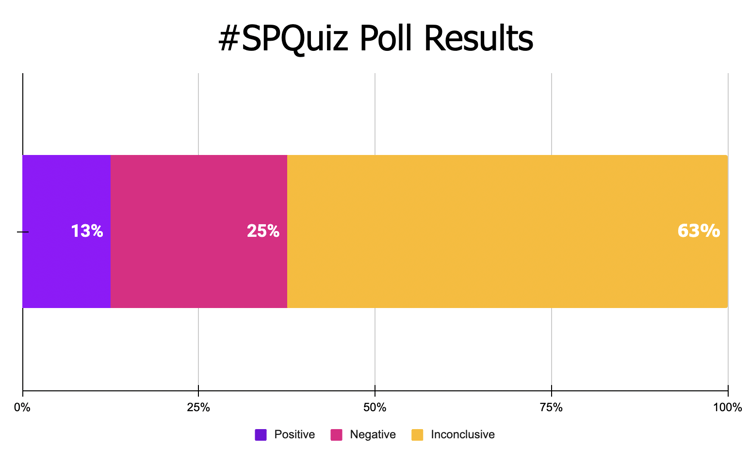
The majority thought this would have an inconclusive impact on organic traffic, with 25% thinking it would be negative. The result, therefore, may be a surprising one. Check out the rest of the case study to see the outcome of this test.
The Case Study
A SearchPilot customer in the travel industry wanted to test whether reducing the size of their internal link block would positively impact their organic traffic. They were planning a large-scale roll-out and wanted to ensure that the change wouldn’t negatively impact their traffic.
We know that the size and layout of on-page elements can significantly impact user experience, particularly in terms of readability and visual clutter. Google also prioritizes user experience; considering factors such as page layout, readability, and engagement metrics when ranking pages.
We hypothesized that reducing the size of the link block may improve the overall readability and visual appeal of the webpage. This could help in creating a more streamlined and user-friendly browsing experience.
Additionally, we believed that optimizing the layout and presentation of links could make it easier for users to navigate the website and locate relevant content. This, in turn, might lead Google to interpret the more concise and well-organized link structure positively. This could potentially improve crawlability and indexing of the page's content.
We expected that by implementing these changes, the customer could see an improvement in their existing rankings. Reducing the size of the link block could help influence how Google perceives its relevance and importance, as well as other page elements. However, given the importance of internal links for SEO, it was crucial to also test for any potential negative impact on organic traffic. It is important to note that reducing this element's size can lead to Google devaluing the page element or the links themselves.
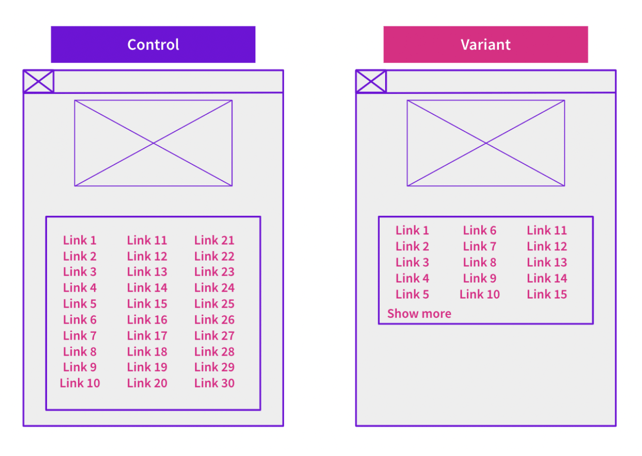
Results
This test resulted in a predicted uplift of 10.2% with an inconclusive result at the 95% confidence interval. However, we did see a positive outcome when looking at the 90% confidence level.
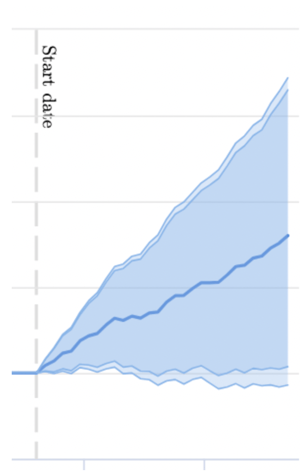
Due to the strong hypothesis, and as there was no discernible negative impact, our customer opted to proceed with deploying the change across all their pages using our default to deploy approach.
These findings suggest that there may be a benefit to concealing certain links within the link block during page load for desktop browsers, particularly when the element features a large number of links. However, as with all large-scale visual and linking changes, we recommend testing first to ensure there is no adverse impact on organic traffic.
To receive more insights from our testing sign up to our case study mailing list, and please feel free to get in touch if you want to learn more about this test or about our split testing platform more generally.
How our SEO split tests work
The most important thing to know is that our case studies are based on controlled experiments with control and variant pages:
- By detecting changes in performance of the variant pages compared to the control, we know that the measured effect was not caused by seasonality, sitewide changes, Google algorithm updates, competitor changes, or any other external impact.
- The statistical analysis compares the actual outcome to a forecast, and comes with a confidence interval so we know how certain we are the effect is real.
- We measure the impact on organic traffic in order to capture changes to rankings and/or changes to clickthrough rate (more here).
Read more about how SEO testing works or get a demo of the SearchPilot platform.
